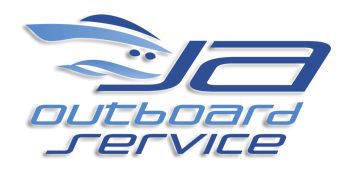Tips For The New Season
- Have a comprehensive boat /motor diagnose performed before the season begins.
- Check all safety and deck items before sailing: check the first aid kit, working fire extinguisher (check expiration date), number of life vest, horn, flares, flashlight, navigation/anchor lights, marine radio, navigation equipment, fenders and a good set of lines (ropes).
- Review engines warning signals from your owner’s manual. Verify the audible and visible warning features that operate at start (system check).
- Prepare a tool box with spare parts and tools. For instance: fuses, fuel/water separator filter, spark plugs, extra propeller, cable ties, assortment of electrical terminals and electrical crimping pliers, long reach pliers, screw drivers, etc.
- To avoid headaches and unwanted surprises perform a visual inspection of your boat and motor prior to launching. Take a mental picture of your boat and motor in good working condition. This image may help you solve a problem.
- Only use marine grade engine oil, because it has corrosion inhibiting additives and proper protection in high rpm operation (ref. to your owner manual for grade).
- Oil level measuring is different in outboard engines compared to automotive engines, because the cylinders are in a horizontal position. The engine must be tilted up for at least 5 minutes prior to checking the oil level. Any oil behind the cylinders will drain down to the oil pan.
- Use an anti-ethanol additive on a continuous basis, unless you fuel at an ethanol Free marina.
- Store your boats fuel tank approximately 7/8 full to minimize the amount of air space above the fuel inside the fuel tank. This will help prevent condensation.
- Make sure you have a 10 micron water separating/fuel filter between the boat fuel tank and the engine.
- Flush your engine with fresh water after every use. It is better to use the hose attachment on the side of the engine, because it introduces water to the power-head directly. Note, the side attachment was designed to be used with the engine off. In order to run the engine on a hose use the proper flush kit for the specific lower unit.
- Attended corrosion in your boat. Make sure your zinc anodes are making good contact and replace when necessary. Use a coating product on hoses, wiring, and pumps after rinsing the boat with fresh water.
- Today boats are highly battery dependable. Battery chargers are needed to maintain and condition a battery for a longer life. So, next time you are considering purchasing a charger look for the 3-stage feature (called Smart Charger).
- For the new boat owners, new engines require a period of break-in to allow the matting surfaces of moving parts to wear-in evenly. Correct break-in will help ensure proper performance and longer engine life.
For engine/boating question: E-mail us at [email protected]
Happy Boating,
J. Alberto
JA outboard Service




